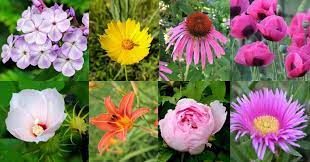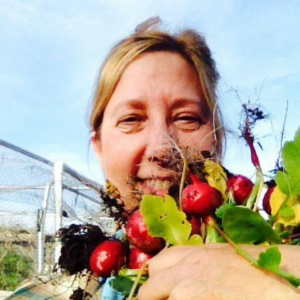Your Garden . . . with Sharon McCray: Now is the perfect time to get those perennials into the ground
Over the years as our gardens got smaller, plant hybridizers began creating fruit trees to better fit in our home gardens.

By Sharon McCray
 The Oxford Languages dictionary explains perennial as “lasting for a long or apparently infinite time; enduring or continually recurring.” That same definition applies to perennial plants and now is the perfect time to get them planted.
The Oxford Languages dictionary explains perennial as “lasting for a long or apparently infinite time; enduring or continually recurring.” That same definition applies to perennial plants and now is the perfect time to get them planted.
There are so many amazingly colorful plants available from our local nurseries, it can be difficult to decide exactly what we want, which can become a “perennial” problem. Seriously, it is always good to remember that when you plant a perennial it is a commitment of sorts. The plants can seemingly be expensive but when their longevity is factored in, they are truly a beautiful, long-lived bargain.
Some of the more enduring perennials include penstemon, lavenders, daylilies, coneflowers, sages, and most grasses along with many California native plants, which have a tendency to thrive during our hot, dry summers. Mexican sage, for example, is still producing brilliant spires of purple flowers well into January and needs little care or summer water. Most perennials provide both nectar and pollen for bees, hummingbirds and butterflies.
 It is best to select a sunny spot in your garden for optimal success. Most perennials prefer soils to be on the dryer side once established. It is better to purchase a smaller size plant, such as a four inch rather than a larger size container. The price will be more affordable plus the overall mature size of the plant will even out, usually within the first year of planting.
It is best to select a sunny spot in your garden for optimal success. Most perennials prefer soils to be on the dryer side once established. It is better to purchase a smaller size plant, such as a four inch rather than a larger size container. The price will be more affordable plus the overall mature size of the plant will even out, usually within the first year of planting.
It is always important to read the label and take the valuable information as the growers word. If the label states the plant will get 15 feet tall, then it probably will. Plan for it. There is nothing as disappointing as to have to remove a plant because it has grown too large for its intended space.
With winter on the horizon, it is also time to start thinking about “bare root season,” including roses and fruit trees. It has become more and more difficult to find true bare root plants, but there are some incredible nurseries and mail order houses that still feel it is the best way to grow healthy plants.
 The term ‘bare root” means exactly what it says. The plant is sold with its roots free of soil. They are usually sold in a loose sandy or sawdust medium. Once you make your selection the nursery worker will wrap the new plant in damp rags or papers. If you are lucky enough to get bare root trees, they should be planted as soon as possible. Remember to soak the roots for a few hours prior to planting so they are well hydrated and ready. Typically, bare root fruit trees will surpass in size within two years, more expensive trees in larger pots.
The term ‘bare root” means exactly what it says. The plant is sold with its roots free of soil. They are usually sold in a loose sandy or sawdust medium. Once you make your selection the nursery worker will wrap the new plant in damp rags or papers. If you are lucky enough to get bare root trees, they should be planted as soon as possible. Remember to soak the roots for a few hours prior to planting so they are well hydrated and ready. Typically, bare root fruit trees will surpass in size within two years, more expensive trees in larger pots.
Over the years as our gardens got smaller, plant hybridizers began creating fruit trees to better fit in our home gardens. The process was to grow standard 20- to 30-foot trees and graft branches onto dwarf, semi dwarf and mini-dwarf root stock. Nearly all fruit trees and most of our roses, are grafted onto root stock that will better perform in our climate and alkaline soils. A “high density” orchard allows the home gardener to grow several fruit trees in a limited space, sometimes planting three or four trees in the same planting hole. This method will benefit pollination, be easier to maintain and the fruit closer to pick.
Although late in the season, it is not too late to plant those bulbs you just found. Now is not the time to fertilize anything either. A light scattering of rye grass seed in your existing lawn, will keep it looking healthy and green during the winter months.
Sharon McCray is a California native living in Santa Clara County since 1959. She became certified as a University of California cooperative extension master gardener in 1992 and a UCCE master naturalist in 2015. She hosts a monthly radio show on KKUP public radio and is now retired.
